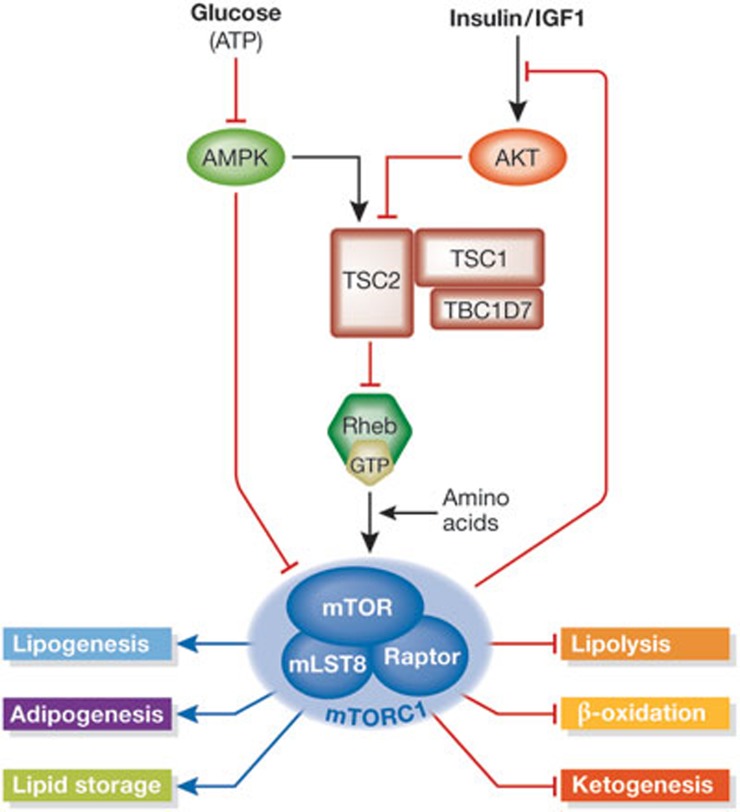Figure 1.
Upstream regulation from the mTORC1 and its downstream functions related to lipid metabolism. The presence of amino acids is required for the activation of mTORC1 by GTP-bound Rheb. Upstream from Rheb, the TSC–TBC complex receives signals about systemic and local nutrient and energy availability, in part through AMPK and Akt. These signals either activate or inhibit the ability of the TSC–TBC complex to act as a GAP for Rheb, thereby inhibiting or activating mTORC1, respectively. Activated mTORC1 leads to enhanced phosphorylation of IRS1, which serves as negative feedback to dampen the insulin response. mTORC1 has many roles in regulating lipid metabolism, including the promotion of lipid synthesis and storage and inhibition of lipid release and consumption, which are detailed in the text. AMPK, adenosine monophosphate-activated protein kinase; GAP, GTPase-activating protein; IRS1, insulin receptor substrate 1; IGF1, insulin-like growth factor 1; mTORC1, mechanistic target of rapamycin complex 1; Raptor, regulatory-associated protein of mTOR; TSC, tuberous sclerosis complex; TBC, Tre-2/Bub2/Cdc16 domain-containing protein.

